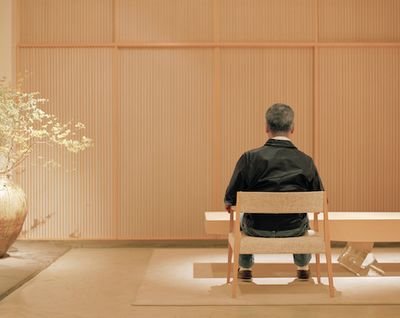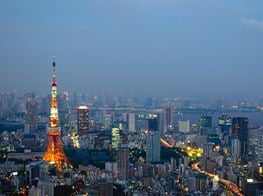Tokyo Focus

Bye-Bye Kitty!!! at the Japan Society in New York in 2011 put a stop forever to the idea that Japanese art was just about the cute helplessness of “kawaii”: a pre-conception that was driven mainly by the super flat motifs of Murakami Takashi’s collaboration with Louis Vuitton where he re-worked the brand’s signature print into rainbow-hued variations with sunflowers and cherries. The Japan Society’s unveiling of the scathingly ironic canvases of Aida Makoto; the violent feminist iconography of Yanagi Miwa’s photographs; and the digitized dreamlike world of crystalline-globe-encrusted PixCell Deers by Nawa Kohei, was a revelation. Some of the key voices in contemporary Japanese practice were, at last, receiving international recognition.
Three years on from Kitty’s demise, what are the trends emerging in her wake? Two shows, one at Tokyo Opera City Gallery and the other at Hara Museum attempt to answer this question. If Bye-Bye Kitty’s tone was one of unbridled iconoclasm, these are more reserved takes on contemporary Japanese art yet each with an unusual angle: a single-medium focus, and an inter-cultural outlook respectively.
“The Way of Painting”
Tokyo Opera City Gallery is known for its Project N series held alongside every exhibition to showcase an emerging artist. This time, it devotes the entire space to twenty four young painters in what for many is their first museum exhibition. The curation centres on the question of how and why the medium of paint is being used in Japanese art today, with refreshingly wide-ranging scope.
Nonetheless, within the artworks exhibited several tendencies emerge. Figurative subject matter is remarkably rare, though an exception is the haunting oil painting of Konishi Toshiyuki. He uses light hues in whorled gestures against a dark background to evoke human figures, leaving their eyes hollow and lurid. Other artists engage in textural experiments – Aoki Yutaka, for instance, applies a gesso-like base on cotton backing which he then coats in metallic acrylic and spray-paint. His works’ clinical effect is offset by Funo Nana’s rich, tapestry-like paintings densely interwoven with background mark-making. Perhaps the most striking works in terms of texture are Takahashi Daisuke’s, in which the canvas is overwhelmed with jagged clumps of oil paint, rendering it effectively sculpture. Other paintings refigured the form of the picture plane: Minamikawa Shimon presents two stand-alone asymmetrical wooden boards, each with a monochromatic fluorescent coating. In the context of the show they gave an impression of being abstract objects, creating with paint not an “image” on a surface but a shape within space.
The most memorable pieces were those in which painting’s parameters were pushed in several directions at once, resulting in unconfirmed hints at figurative form within abstract mark-making. Mochizuka Miki’s palette centres on vivid green hues evoking botanical scenes through disparate brushstrokes. Ohno Satoshi‘s striking large-scale piece, PRISM Bye Bye Sunset (2013) contains fluorescent pixelating shapes which seem to alter in appearance when viewed from differing angles. His optical-illusionary canvas seems born of the neon skyscrapers of Shinjuku as much as it harks back to a Western tradition of vast, expansive landscapes.
“Art Scope: Remains of Their Journeys”
Meanwhile at Hara Museum of Contemporary Art, Ohno Satoshi is part of a more explicit artistic exchange between East and West, in Art Scope sponsored by the Daimler Foundation Japan. Launched as a German residency for Japanese artists, since 2005 it has been a two-way exchange with group exhibitions in Berlin and Tokyo. In recent years, the number of young Japanese artists living and working in Berlin has grown exponentially – perhaps encouraged by the city’s reputation for artistic experimentalism, combined with vastly cheaper studio rents than in Tokyo. Many artists initially arrive on grants from the Culture Ministry or the Japan Foundation, and stay - it could even be considered what Paris or New York was to a previous generation of creators.
Reflecting the program’s free remit for creative response to travel, the four artists have largely produced work reflecting personal journeys. Rita Hensen’s series Photographs Taken Outside Tokyo (2012) explores the countless tiny notations in Japan’s visual landscape which nevertheless add up to an overwhelming sense of “difference” for the first time visitor. Houses seem compact, contorted dwelling spaces; telegraph lines interlace spot-lit noodle shop signs in flowing hiragana. Hensen also presents an installation of abstract drawings on Japanese washi (hand-made paper) interleaved with paper fragments from her visit. Beside it she installs a stamp and inkpad, inspired by the train station stamps often seen in Tokyo and which viewers are invited to use. We become participants in Hensen’s re-simulated Tokyo travel experience, while enacting a gesture symbolic of the bureaucratic infrastructure on which Japan’s national existence relies.
Benedikt Partenheimer submits a photographic series inspired by the particularly iconographic presence of vending machines throughout Japan. These otherwise unremarkable machines take on a special significance, depicted as glowing organisms still running even in the middle of the night. In a second series, Turnaround (2012), influential Japanese art world figures are photographed with their backs to the camera. Partenheimer is perhaps acknowledging perceptions of Japan as the last refuge of Orientalist fantasy: an “exotic” land which the foreigner can never truly know, even extending to its contemporary art.
Imamura Ryosuke presents installations and video works which three-dimensionally reconstruct his living environments in Germany. A Wind and a Calm (carbonated water, a clock and the outside) (2013), comprises a looped silent video of a view of green from the corner of a window, focalizing on a small ticking clock and a glass of soda water. Only the moving seconds-hand of the clock and occasional air bubbles rising in the glass hint at the passing of time. The sparse colour scheme of vivid green and white seems bathed in a particular opalescent light. The minimalist precision of Imamura’s aesthetic resonates with a tendency in Japanese art and design towards sparse composition, yet here it is directed towards the birth-country of intricate High Gothic taste.
Finally, Ohno develops his work on vast, expansive colour fields expressed in combinations of spray- and oil-paint. In Royal banana parfait (2014), the matte forms of the spray paint come into contradistinction with the more fluid oil brushstrokes, creating a vividly complex canvas. There is something musical about his work, as if transcribing clashes of instruments on the picture plane.
Unlike, The Way of Painting, Art Scope does not offer an over-arching theme. Rather, it asks us to reconsider the notion of the “foreign” through a valuably open-ended range of perspectives.











































































































































































